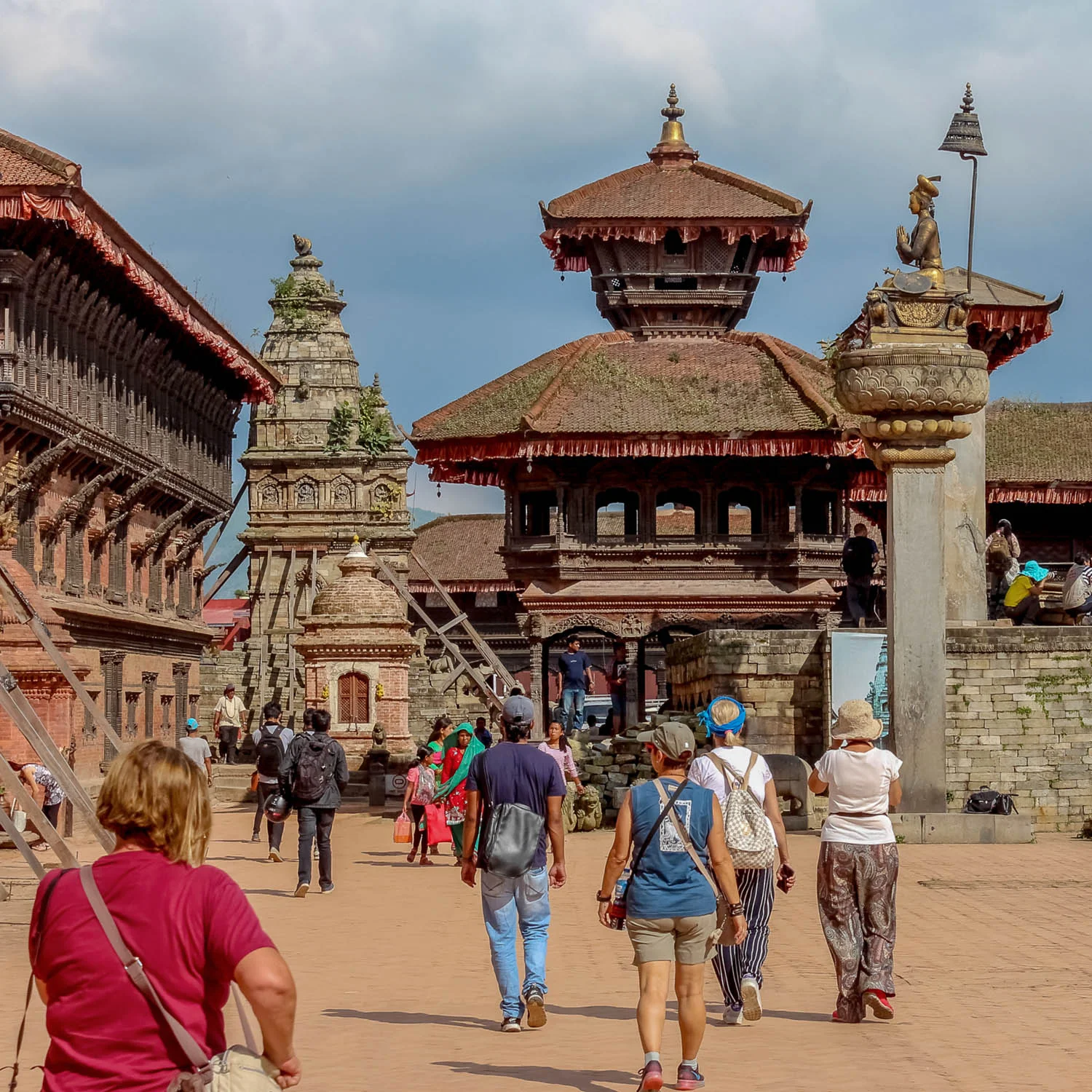Heading for the Hills on Kathmandu's New Cable Car
One of the pleasures of revisiting a favourite city is finding new things to do.
Asia’s larger cities are forever growing and changing, and while senior travellers will surely enjoy returning to some of the spots they’ve seen on earlier visits, they’ll probably want to discover new places to see too.
One such attraction in Kathmandu is a cable car into the Chandragiri Hills on the southwestern outskirts of the city. Opened in December 2016, it’s the first cable car in the Kathmandu Valley and offers a new perspective on the city and its surroundings.
The journey affords an escape from crowded central Kathmandu and an opportunity to enjoy the cooler, fresher air in the hills that ring the city.
The trip by gondola from the lower to the upper cable car station takes just over 10 minutes. The ride is popular with locals and foreigners alike, and even at 9.55am on a Tuesday, when I arrived at the lower station, a long queue had formed.
The queue was orderly and moved steadily, though, and gave time for a bit of people watching, one of travel’s best pastimes. Young couples, family groups, older people…all waited amiably, without a trace of impatience.
The round trip to the upper station and back costs US$22 for most foreign travellers, with a 25 percent discount for people over 60. Visitors from South Asian countries pay 1120 Nepalese rupees (just over $10) and local people 700 rupees. The cable car’s website (http://www.chandragirihills.com) has details of other discounts and restrictions.
Each gondola has an open window on one side, and as you begin the steep 2.5 km ride up the hill, you’re struck by the loud screeching of insects in the bright green forest below – a reminder that you’ve left the city behind.
A sign in the gondola says it’s limited to eight passengers. On the ride up, however, ours had nine. They included two children; perhaps they each counted as half.
The cable car system was built by an Austrian company, Doppelmayr, for a privately-owned Nepalese firm. It’s the second cable car in Nepal. The first, the Manakamana cable car, built by the same Austrian company, opened in 1998 in Chitwan, some 70 kilometres northwest of the city.
The gondolas are compact but with enough legroom for even large foreign travellers. Staff are on hand at the two stations to help people with disabilities, and wheelchairs are available at the upper station for those who need them.
From this station, it’s a steep but short walk on a concrete path to the top of the hill. The climb is easy enough even for older visitors but it’s wise to wear comfortable walking shoes. Energetic visitors can even go walking on hillside trails in the area.
Take a coat or jumper too. At more than 2,500 metres above sea level, the hilltop is colder than the city in the valley below.
At the top is a central building with restaurants, shops, a beer garden and a viewing tower. Nearby is a temple, the Bhaleshwor Mahadev temple devoted to the Hindu god Shiva; the temple is new but Chandragiri Hills has historic links with both Hinduism and Buddhism. A conference hall, a small amphitheatre and a children’s playground are also dotted about the hillside.
The views of the surrounding hills are excellent, and give you a genuine sense of being in the countryside. But because of the late April haze on the morning I was there, none of the main Himalayan peaks was visible.
Signs indicate the direction of many of the high peaks, including Mount Everest, some 160 km to the east, and the Annapurna range to the northwest. Visitors hoping to see them will probably be more fortunate in late autumn or winter – October to January – when the air is at its clearest and the views can be spectacular.
Still, even on a hazy day it’s worth paying an additional 50 rupees to climb to the viewing tower and take in the views of the temple and nearby hills.
The lack of crowds at this relatively new tourist site is one of its attractions. Although there is also a rough road to the top station, almost all visitors come by cable car, and their numbers are limited. The cable car’s 38 gondolas can carry only about 1,000 people an hour.
It’s likely to get busier when a resort currently being built below the top station is completed, giving visitors the option of overnight stays. Other planned attractions designed to entice visitors to stay longer at the top include an amusement park, zip lining and paragliding.
The cable car is open from 9 am to 7 pm on weekdays and from 8 am to 7 pm on weekends and public holidays.
The operators run a free shuttle bus from central Kathmandu to the lower station. But if you want to set off at a time and place of your choice, the most comfortable way is to hire a car, perhaps through your hotel.
The journey is likely to take anywhere from 45 minutes to a couple of hours. It took me 45 minutes to reach the lower station from my hotel near Kathmandu’s Thamel area. But the return journey took more than two hours after we were caught in an inexplicable traffic jam.
The lesson is that while the cable car trip can be done in half a day, don’t count on rushing back to town to do something else immediately afterwards.
Header image: © Shikhar Bhattarai







